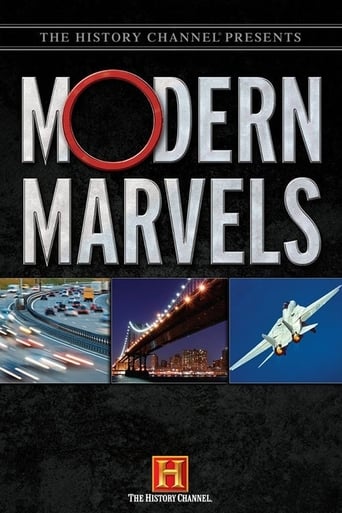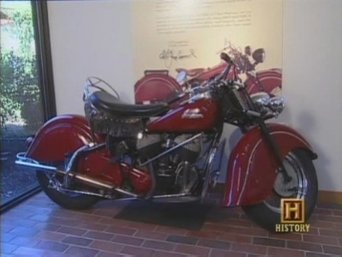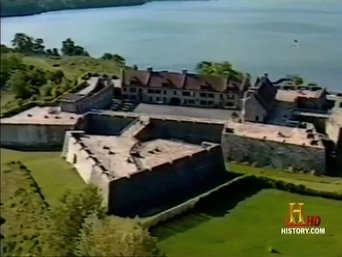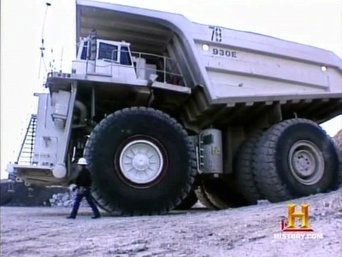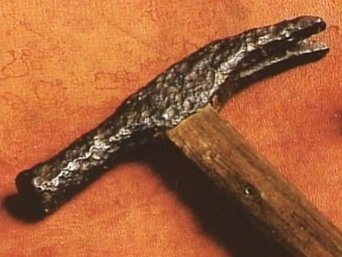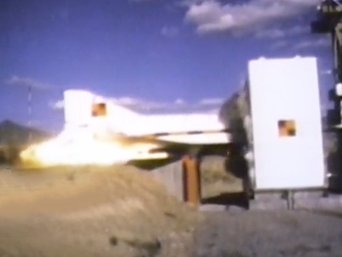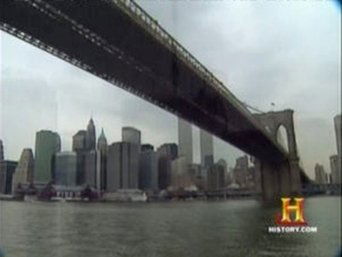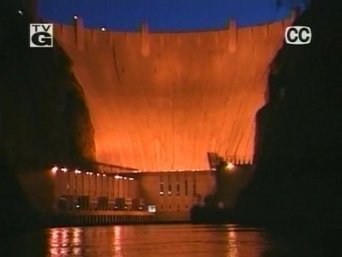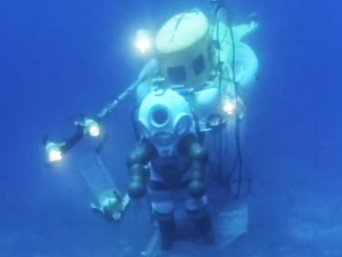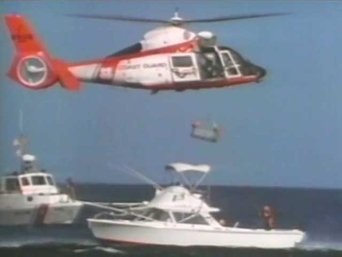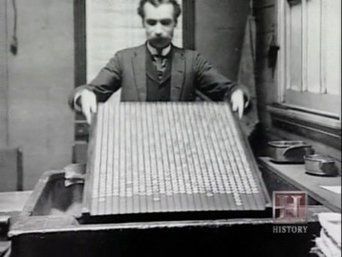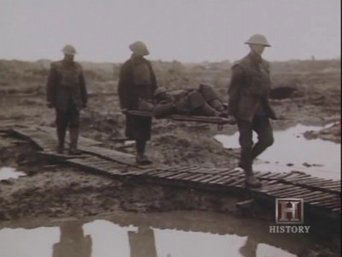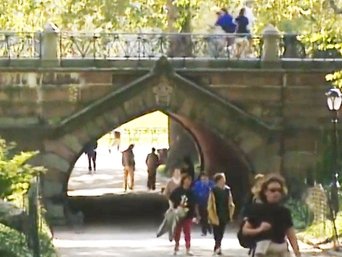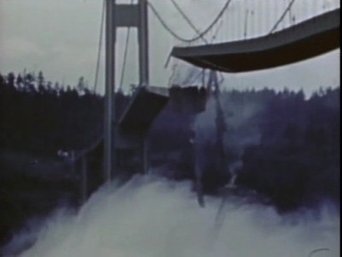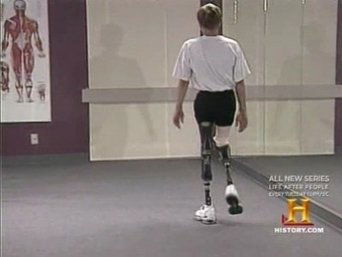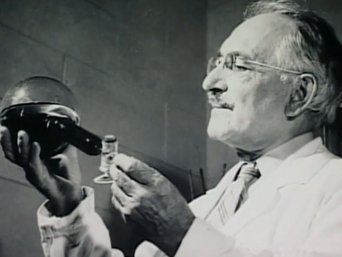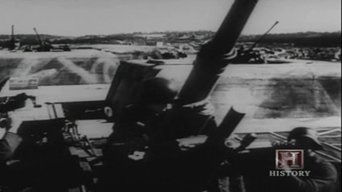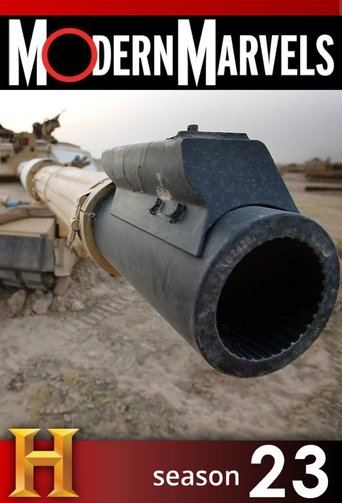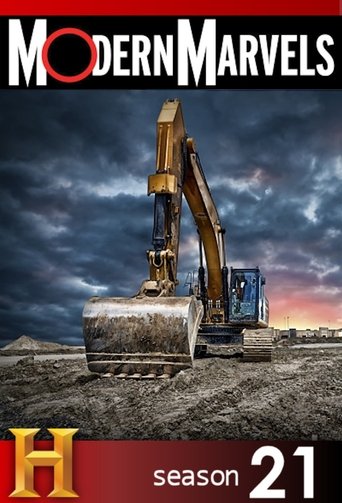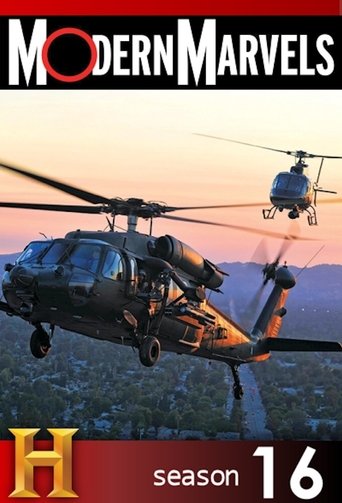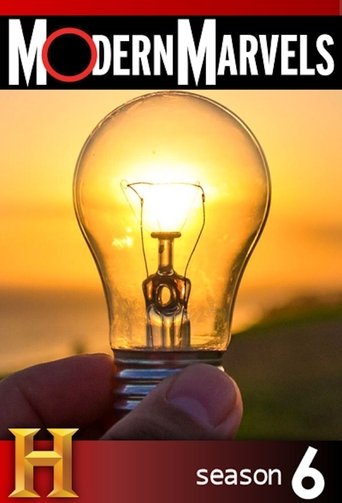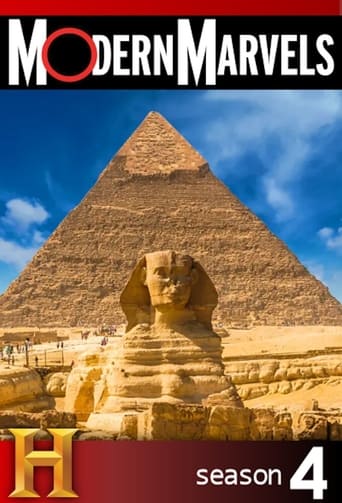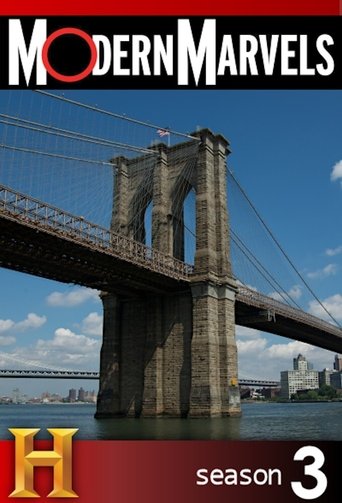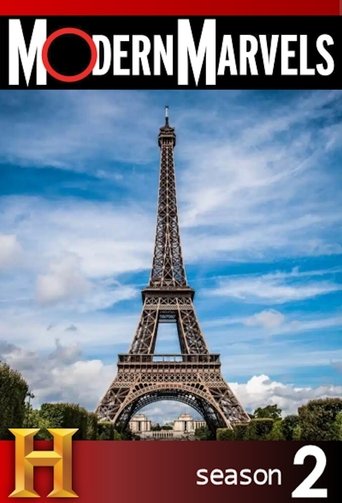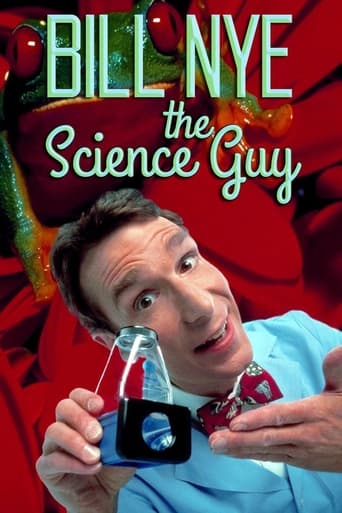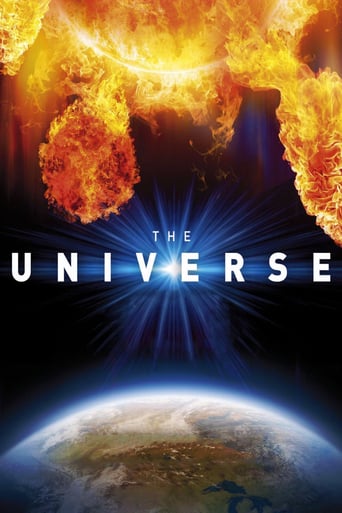Modern Marvels Season 6

HISTORY’s longest-running series moves to H2. Modern Marvels celebrates the ingenuity, invention and imagination found in the world around us. From commonplace items like ink and coffee to architectural masterpieces and engineering disasters, the hit series goes beyond the basics to provide insight and history into things we wonder about and that impact our lives. This series tells fascinating stories of the doers, the dreamers and sometime-schemers that create everyday items, technological breakthroughs and manmade wonders. The hit series goes deep to explore the leading edge of human inspiration and ambition.
Watch NowWith 30 Day Free Trial!
Modern Marvels
1993 / TV-PG


HISTORY’s longest-running series moves to H2. Modern Marvels celebrates the ingenuity, invention and imagination found in the world around us. From commonplace items like ink and coffee to architectural masterpieces and engineering disasters, the hit series goes beyond the basics to provide insight and history into things we wonder about and that impact our lives. This series tells fascinating stories of the doers, the dreamers and sometime-schemers that create everyday items, technological breakthroughs and manmade wonders. The hit series goes deep to explore the leading edge of human inspiration and ambition.
Watch Trailer
Modern Marvels Season 6 Full Episode Guide
The very spirit that drives man to dream up ever more fantastic creations can also conceive changes that destroy old treasures. We look at great artistic and engineering feats that fell prey to the ravages of nature, the wastes of war, and the indifference of booming metropolises.
Place your bets and join us for an exciting spin through the history of the casino. We’ll go behind the neon lights, free drinks, and 24-hour gambling to see how the gaming industry has evolved from a simple house of cards to a high-tech multi-billion dollar industry.
An exploration of the rich history of one of the world’s greatest technological achievements–the harnessing of power from Niagara Falls. From the “War of the Currents”, a battle between geniuses Thomas Edison and Nikola Tesla, to the Robert Moses Plant, primed to take the powerhouse into the 21st century, we highlight its story.
Throughout history the same builders and engineers that paved man's path out of the caves and into the modern world also caused some of mankind's worst disasters. Often a huge calamity is traced back to a tiny cause, insignificant in itself, but triggering a domino effect. We'll revisit notable disasters and search for probable causes.
Since civilization’s earliest days, man has sought protection from those who would rob him of riches, knowledge, and even life. This is the story of the evolving systems designed to safeguard our most precious possessions, and of the enduring psychological war between protectors and thieves, each intent on outfoxing the other.
Set the sedan’s safety brake and hop on your “hog” for a 2-hour high-speed history of the motorcycle–from the 1868 “steam velocipede” to the early 20th century, when they were a low-cost alternative to automobiles; from Harley-Davidsons preferred by Hell’s Angels and police to motocross riders who take bikes into the air and onto the dirt. We also look to the motorcycle’s future, featuring Jay Leno’s jet-propelled Y2K sportbike and Erik Buell’s bike-without-a-gas-tank creation.
Emergency room medicine has only been a recognized specialty since 1989, and it took close to two millennia to get to this point. We’ll examine advances that led to the modern emergency room–from the Byzantine’s establishment of the first hospitals around 1050 A.D. to today’s telemedicine. The prognosis for its future looks good.
The art of fortification evolved along with man’s need to defend his territory from attack. There was no other reason. From hills surrounded by branches and crude fences to intricate walled cities, to impenetrable castles – the strongholds of the past echo the history of great battles for territorial control.
Join us for a second look at the big earth-moving machines used to tackle the most challenging jobs on, under, and off Earth! We'll ride on specialized behemoth dump trucks, delve below sea level to view dredging equipment, and leave the planet altogether to explore earthmoving equipment in space.
Well over two million years before the evolution of modern man, his primitive ancestors were making tools. The use of tools is thought to be one of the keys to human evolution itself and it permeates nearly every aspect of history. We even measure history according to our ability to craft tools; the Stone Age, the Bronze Age, the Iron Age.
The history of civilization could easily be measured in terms of our ability to make, use, and improve tools–an activity that is at least 4 million years old! At the tip of our toolmaking timeline are power tools. We’ll examine today’s power tool industry, which is booming thanks to more powerful, lighter, and quieter cordless tools.
Though “simulations” date back to cave paintings, devices for interacting with “synthetic realities” are a recent invention. See how simulators are used as training tools for nearly every profession today where hands-on experience is too costly or dangerous–from the 1929 Link Pilot Trainer to simulated virtual realities.
Since the invention of gunpowder, fireworks have thrilled audiences around the world. We’ll view highlights of fireworks exhibitions throughout history, and go behind the scenes to explore how science and art mingle in this unique, ancient craft. The world’s preeminent fireworks families explain how they create their spectacles.
Tracks the technological innovations that made newspapers what they are today, while exploring the stories of the publishing tycoons who became some of the most powerful men of the 20th century. From the invention of the printing press in the 15th century to computerized newsrooms to the Internet, we examine the history of the news.
The idea of floating to earth from great heights dates back centuries, and from the beginning parachutes combined entertainment with life-saving utility. The parachute has also played a vital role in modern warfare since WWI. We’ll see how parachute technology has made the world safer, and more fun!
Delves into the little-known, hugely important, multi-billion-dollar industry of product testing–where wrinkles get ironed out and goods are stripped of marketing and hype to see if they work. Meet product testers who serve as truth squads in an eccentric world of machines devised to “sneeze” at tissue paper and “sleep” on mattresses.
Much of New York City’s history can be viewed via its bridges–all 18 that connect Manhattan Island to its neighbors. Join us for a look at these architectural masterpieces from the age of iron and steel; and, see how they have changed destinies, linking some to opportunity, others to ruin.
Step up to the plate and play ball as we take you on a tour of those amazing edifices of the national pastime–baseball stadiums! From the sandlots and wooden ballparks of the 1800 and 1900s to the monolithic multipurpose stadiums of today, baseball parks have grown into technological wonders that pull in and cost millions.
The task was monumental: Build the world's largest dam in the middle of the desert, and tame the river that carved the Grand Canyon–all in seven years! When the Hoover Dam was completed in 1935, it was the largest dam in the world. We'll reveal how this engineering wonder of the world was conceived and built.
Join us for a highly charged hour as we see why Alfred Nobel's invention of dynamite took on earthshattering dimensions as his product blasted out the natural resources that built our modern world. We also examine its impact on construction of the roads, tunnels, and dams that provide us with energy and transportation.
Offshore drilling is one of the greaest technological dances mankind has ever attempted. From the very beginning of oil discovery, the oceans and their vast reserves became the ultimate frontier. For those willing to take the risk, the oceans offer unprecedented success and unimaginable failure.
In antiquity, a hollow reed served as an underwater link to oxygen. As in days of old, humans still need self-contained breathing equipment for a variety of reasons–food-gathering, commercial, recreational, military, and scientific. Dive with the best as we test scuba diving’s past, and look to a future of mechanical gills.
Avalanches, earthquakes, hurricanes, bombings–all mean human tragedy unless rescuers respond within a moment’s notice of disaster. Here are the latest advances in rescue technology, including: a Searchcam system that locates buried victims, and the Jaws of Life that can extricate a person from a crushed car in seconds.
Whether it jingles in our pockets or folds in our wallets, it flows by the billions from government factories that have mastered the art of making it.
“He who would become a surgeon should join the army and follow it,” Hippocrates counseled nearly 2,500 years ago. In this history of medicine under fire, we see how a small army of medics, nurses, surgeons, stretcher-bearers, and ambulance drivers, races to keep pace with the deadly advances of war.
Espionage has been used for at least the last 4,000 years. And where there are spies, you find gadgets! We focus on the last 100 years of cloak and dagger technology–from early code-breaking computers to satellite reconnaissance–and take a look at the James Bond-type gadgets of the Cold War.
Even in ancient times, city dwellers needed a scenic break from the urban landscape. But parks play a more important role than mere relief from tension–they also keep temperatures down and supply much-needed oxygen in congested cities. Come along for a stroll through New York City’s Central Park and L.A.’s Griffith Park.
Throughout history, the builders and engineers who paved our way out of the caves and into the modern world have also caused some of our worst disasters. What happens when their calculations prove wrong and it all comes tumbling down? From Hammurabi’s days, when the first building laws were instituted, to today’s potential nuclear or chemical disasters that can spell death for thousands, we’ll take a harrowing 2-hour tour through some of history’s greatest engineering mistakes.
Meet the Strong Men and Women who go beyond mere fitness to pursue major muscle mass–from ancient Greeks, to performers in the 1800s astounding audiences with feats of strength, to the body builders of California’s Muscle Beach! Lou Ferrigno and other stars share stories of the pursuit of muscle. Also looks at the effect of steroids.
First there were balloons and blimps. Then, visionaries enlarged, reinforced, and motorized them and the airship was born. The biggest aircraft ever flown, they remain one of the most romantic aerial creations. In all, 161 rigid airships were built before spectacular crashes, including the EM Hindenburg /EM , put an end to the era.
Does anybody really know what time it is? Set your clocks as we explore the relativity of time from antiquity–when man attempted to chart time with methods ranging from shadows, candles, and water–to today’s atomic clock system–accurate to within one second every two-million years.
Through rain, snow, heat, or gloom of night, we expect postmen to deliver the mail. The U.S. Post Office handles over 603-million pieces of mail daily. Yet it represents only 43% of the world’s total mail volume. From ancient Sumerians to Pony Express, from airmail to E-mail, we follow the long journey of mail.
The ability to transmit sound in stereo transformed the music of life into a rich symphony of sound. For over 100 years, enthusiasts and scientists have worked to create the ideal listening experience. From Thomas Edison’s early phonograph to today’s digital revolution, we examine this multi-billion dollar business.
A study of the discoveries, inventions, and technological advances that have helped us understand and predict weather accurately. From simple observations made by early humans, to early instruments such as thermometers and barometers, to Doppler radar and satellite imaging, we’ll see how man has tried to harness weather.
From the earliest recorded account of an amputation and subsequent prosthesis in ancient Hindu writings, to a 16th-century fully articulated artificial hand controlled by an intricate geared mechanism, to today’s use of plastics and space-age materials, we chronicle the long history of prosthetic devices.
Bombs…the most feared and powerful weapon in any nation’s arsenal. What began as incendiary devices in the 7th century has evolved into weapons that can literally blow the human race off the face of the earth! From the use of diseased carcasses flung over castle walls to Greek Fire to today’s smart bombs, we review the evolution of bombs.
To run faster, jump higher, and play longer–the ultimate goal of all athletes. But when training runs its course, science and technology jump in. Explore the history and technological advances in everything from athletic shoes to football gear. And leap into a future filled with radar-enhanced baseballs and virtual-reality stadiums.
The story of medical imaging, the technology that allows us to see inside the human body, is full of amazing stories. Learn how X-rays were discovered in 1895, completely by accident; how ultrasound was developed to locate enemy submarines, and how the CAT Scan might never have been built if it weren’t for The Beatles!
Plastics are everywhere–the home, the workplace, the car, the human body, outer space, and most conspicuously, the garbage heap and landfill. Artificially created test-tube material, plastic can’t be returned to nature. Will we drown in a sea of plastic? Join us as we review this protean substance’s past and future.
More than the gun, more than the billy club, it is the critical weapon in law enforcement’s arsenal. But for decades, police have struggled to stay ahead of well-equipped bad guys. Rare photos and interviews tell the story of their battle for high-tech horsepower.
In 1941, penicillin was first used to save human life. But now, bacteria has emerged resistant to every known antibiotic, and scientists have begun to fear that the era of the wonder drugs is near to its end.
What inspires societies to create sculptures on a superhuman scale? We’ll examine gigantic statues and the monumental commitment of time, money, and talent needed to complete them. We’ll study the Sphinx, Colossus of Rhodes, Statue of Liberty, Mount Rushmore, Brazil’s Christ the Redeemer, Russia’s Motherland and the Crazy Horse Memorial.
San Francisco's Oakland Bay Bridge stands as an incredible feat of engineering against the nearly impossible. Once chosen as one of the seven engineering wonders of the modern world, it features an unique double suspension structure in its west end. Join us as we cross this triumph of construction, while we visit its past and look to its future.
Out of the bleakness of a vast desert arose a city built on wish fulfillment and indulgence. Unencumbered by tradition or notions of good taste, for 50 years Las Vegas has taken tourists to the height of their imaginations while reaching into their pockets. Visit 11 of the world's largest hotels in the country's biggest playground.
Public aquariums have undergone dramatic changes since inception in mid-19th century. A series of technological innovations has transformed them into virtual oceans with spectacular multi-million gallon displays. Examine the latest high-tech aquatic wonders and take a peek into their future.
A look up at the symbol of the American Century–the skyscraper, the construction of which is a triumph of engineering and capitalism. Climb to the top of the Empire State Building, Chrysler Building, Sears Tower, and World Trade Center to see how ego, money, and technology joined to build the tallest of man-made structures.
The Atlantic Wall explores the construction of the shore fortifications built by the Nazis during World War II. We highlight the logistics of construction, types of fortifications, weapons, and obstacles used in the wall. The Nazis attempted to fortify 3,000 miles of occupied European coastline before the Allies launched thier attack on occupied Europe. Finally the Allied D-Day invasion planning and execution, with its associated propaganda and deception, are detailed.
While a civilization’s greatness is reflected in the achievements of architects and engineers, equally impressive are spectacular acts of destruction throughout history. The cycle of construction and destruction reflects the shifting values of any given era. We’ll trace the evolution of planned destruction from ancient to modern-day.
Free Trial Channels
Seasons


